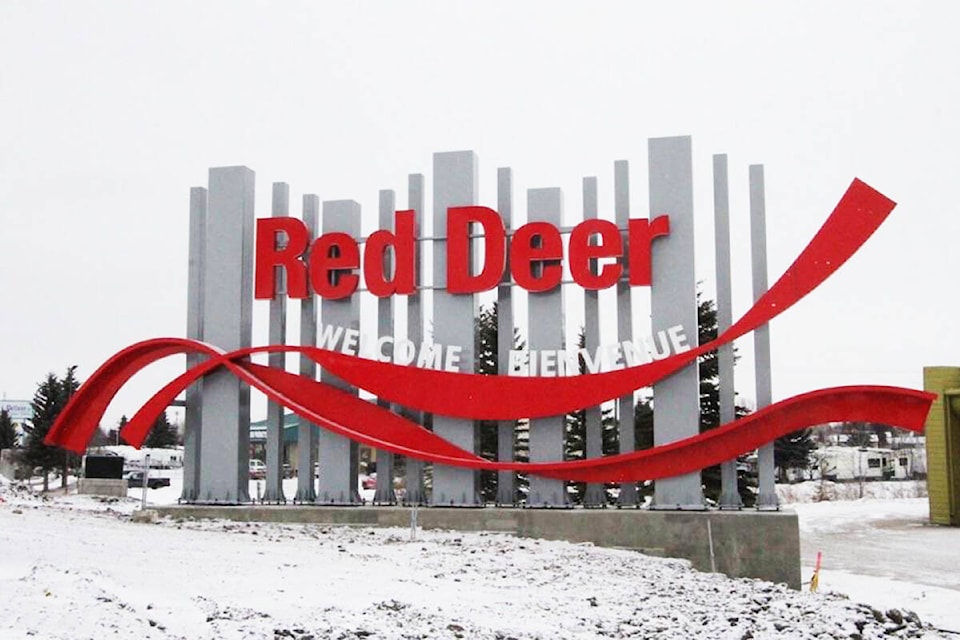Red Deer has regained the population bronze medal.
The 2021 Statistics Canada census says Red Deer is Alberta’s third largest city following Calgary and Edmonton.
The city remains above 100,000 people with 100,844 calling Red Deer home — up a very modest 0.4 per cent from the 100,418 counted in 2016 by Statistics Canada. That compares with the 10.9 per cent growth rate from 2011 to 2016, when Red Deer’s population exploded from 90,564 to hit the magic 100,000 mark.
Rival city Lethbridge had a 2021 population of 98,406 — up 6.1 per cent from the 92,729 counted in 2016, according to the census. Its population grows to 123,847 if counted as a census metropolitan area (CMA), which includes nearby communities. There is no CMA count for Red Deer.
Red Deer lost its third-place crown in 2019 after each community did a municipal census. Lethbridge tallied 101,482 residents, ahead of Red Deer’s count of 101,002.
Neither community has done a municipal census since, in large part because of the pandemic. Red Deer is not planning a census this year but Lethbridge is expected to do a new head count in 2022.
Red Deer Mayor Ken Johnston is somewhat buoyed by the numbers considering how hard hit the local oil and gas service sector was by freefalling world oil prices, and unemployment that at one point soared to double digits in the city.
“Really, I think it’s a bit of a robust story in the sense that we’ve been able to weather that kind of downturn and weather those unemployment numbers and still maintain the population numbers that we have,” said Johnston.
“It’s a testimony to our quality of life and a testimony to what people really value if economically they can still make a good living in this city.”
City council is determined to keep the focus on economic development to create jobs and opportunities and lure more newcomers to the community and he expects the pace of population growth to pick up.
“That’s something that we are absolutely fixated on and focused on as an administration and a council over the next few years.
“I see the opportunities in front of us as immense and, frankly, I think we’re going to see those private sector investments come in to match those expectations.”
Maintaining population is also important for communities because many provincial and federal grants are based on per capita funding, he said.
In central Alberta, fast-growing communities such as Blackfalds and Sylvan Lake continued to lead growth in the region.
Blackfalds population surged 12.2 per cent — 10,470 in 2021, compared with 9,328 in 2016. Sylvan Lake’s population grew eight per cent — to 15,995 from 14,816 in the 2016 count. Penhold also attracted a number of new residents, growing six per cent to 3,484 from 3,287.
No central Alberta municipalities made StatsCan’s list of top 25-growing communities over 5,000 in Canada.
Only two Alberta communities made the list. Cochrane came in 11th on the list, growing 24.5 per cent to 32,199 and Airdrie was 25th, growing 20.3 per cent to reach 74,100.
However, two central Alberta communities did make the list of communities over 5,000 showing the steepest population decline.
Stettler’s population fell 4.3 per cent — to 5,695 from 5,952 — putting it in 15th place, and Didsbury came 21st with a population that fell 3.8 per cent — to 5,070 from 5,268.
The region’s smaller communities were the mostly likely to have lost population in the five years between censuses.
Eckville’s population fell 9.9 per cent to 1,014 from 1,125, Bentley’s population dropped 3.3 per cent to 1,042 from 1,078, Sundre is down 2.1 per cent to 2,672 from 2,729, Castor’s population fell 13.3 per cent to 803 from 929 and Coronation’s numbers were down 7.7 per cent to 868 from 940 and Rimbey was down 3.8 per cent to 2,470 from 2,567.
Other communities showed modest growth. Lacombe grew 2.6 per cent to 13,396 from 13,057, Innisfail 1.8 per cent to 7,985 from 7,847, Olds 0.3 per cent to 9,209 from 9,184 and Rocky Mountain House grew two per cent to 6,765 from 6,635.
Red Deer County grew 2.1 per cent to 19,933 from 19,531, Stettler County was up 1.8 per cent to 5,666 from 5,566 and Ponoka County two per cent to 4,255 from 4,199.
Mountain View County’s population fell 0.7 per cent to 12,981 from 13,074, Lacombe County was down 0.6 per cent to 10,283 from 10,343 and Clearwater County was down 0.7 per cent to 11,865 from 11,947.
